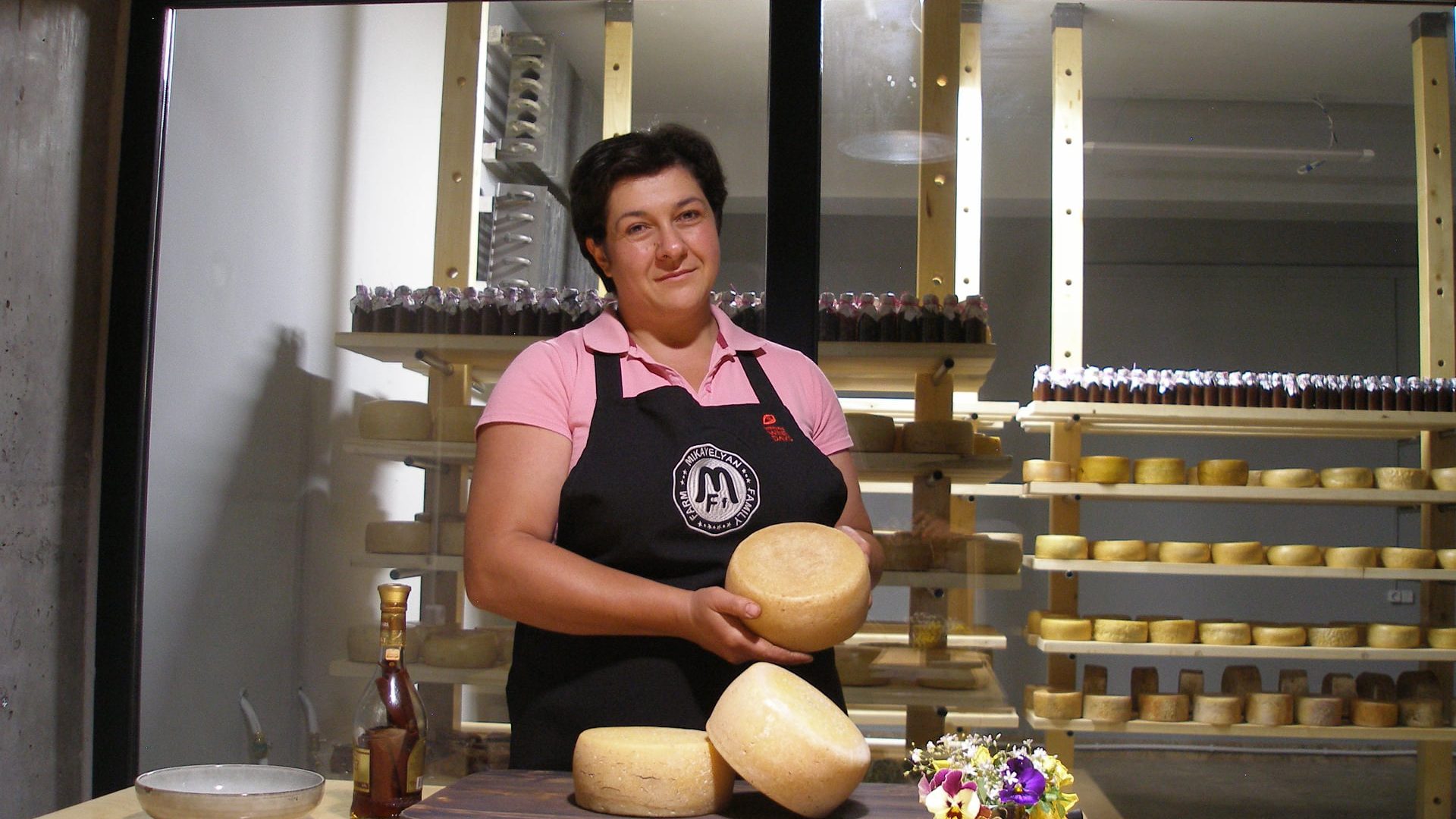Cheese Making in Georgia
Caucasian people love cheese and dairy products. And Georgians are no exclusions.
People here have a long tradition and diverse techniques of cheesemaking. The country even holds the status of the cradle of cheese (next to the wine, of course).
Every region in Georgia has its own unique cheesemaking traditions and produces various types of cheese that locals and visitors enjoy daily.
There are 14 varieties of cheese in Georgia: Sulguni, Megrelian sulguni, Svanetian sulguni, Tushetian guda, chogi, tenili cheese, kalti, Adjarian chechili, Meskhetian chechili, gudis kveli, kobi, Imeretian, and Kartli cheeses.
Locals love Sulguni and Imeruli cheeses. Most of the Georgian dishes include these two. Some people even call Sulguni “Georgian Mozzarella.”
Why is Sulguni cheese so tasty that locals and tourists can’t get enough of it? It’s all in the preparation process.
Processed in hot water and then wrung by hand, Sulguni consists of many thin cheese layers, which can be peeled and eaten that way (some people say that it’s the tastiest way to eat Sulguni).
Georgian cheese is also known for its long-term cheese storage tradition, discovered in almost every region of the country. One such cheese is Tushetian (Kakheti) guda made from sheep milk through a long, complex process.
Read the contemporary story of Georgian cheese featured by BBC here
Cheese Making in Armenia
“Not by bread alone, but by bread and cheese Armenians live.”
- Armenian proverb
What more can we say about how Armenians love and treat cheese? It’s an absolute staple of the Armenian table. Breakfast, lunch, dinner, huge banquet, you can’t find a table without cheese in Armenia.
And Armenians don’t just have a love for cheese; they also know how to make delicious cheese.
The most popular types of cheese in Armenia are chanakh, lori, chechil, and motal:
- Chanakh is actually quite popular in the entire Caucasus region. You can observe how they use white wines, natural honey, or syrups to make this brine-ripened cheese.
- Lori is a cheese made of cow milk, sometimes mixed with buffalo milk.
- The chechil cheese is one of a kind. It doesn’t look like regular cheese; it resembles a beautiful braid. The rennet is added to the cow’s milk, and once the cheese curdles, it is stretched into threads and then braided.
- According to international experts, Motal cheese is one of the world’s top-quality cheese types, along with French Roquefort and Italian parmesan. The cheese ripens in goatskin gourds for 3-4 months which involves stems and mountain thyme leaves.
Armenians keep their heritage in their cheese but don’t avoid technological development. Modern technologies advance cheese-making in Armenia.
One of the pearls in the crown of the country’s cheese industry is the so-called drunk cheeses.
Gavar is a modest farmer in Armenia who has been providing wine restaurants and bars of Yerevan with craft cheeses. The cheese gets its final form in the cellars of the Artsvakar cheese factory. The microclimate is perfect for ripening the cheese.
In total, the Mikaelyan farm produces 8 types of craft cheeses: soft, semi-soft, semi-hard, hard, and extra-hard.
You will also encounter the “armesan” cheese – which is made differently from the Italian parmesan cheese but resembles it. And who could forget about the Aroma Del Vino – cheese, ripened in dry red Areni and white fruit wine? It has a rich aroma, sharp taste, and purple hue.
For more refined tastes, try the brandy-soaked cheeses – these delicious golden cheeses sit on the shelves right next to those soaked in wine.
Visit Mikayelyan farm’s Facebook page to find more about the exotic cheeses of Armenia:













